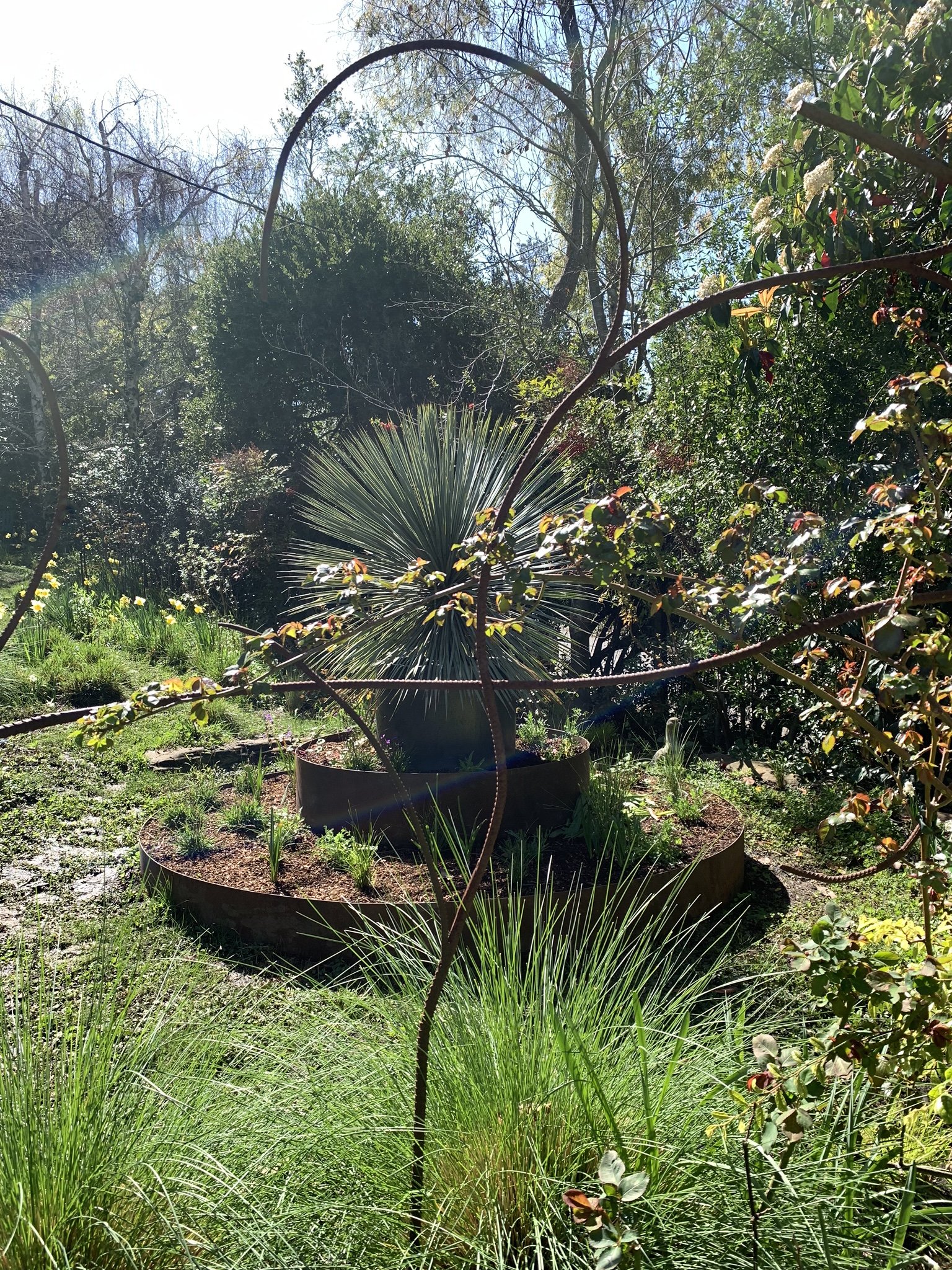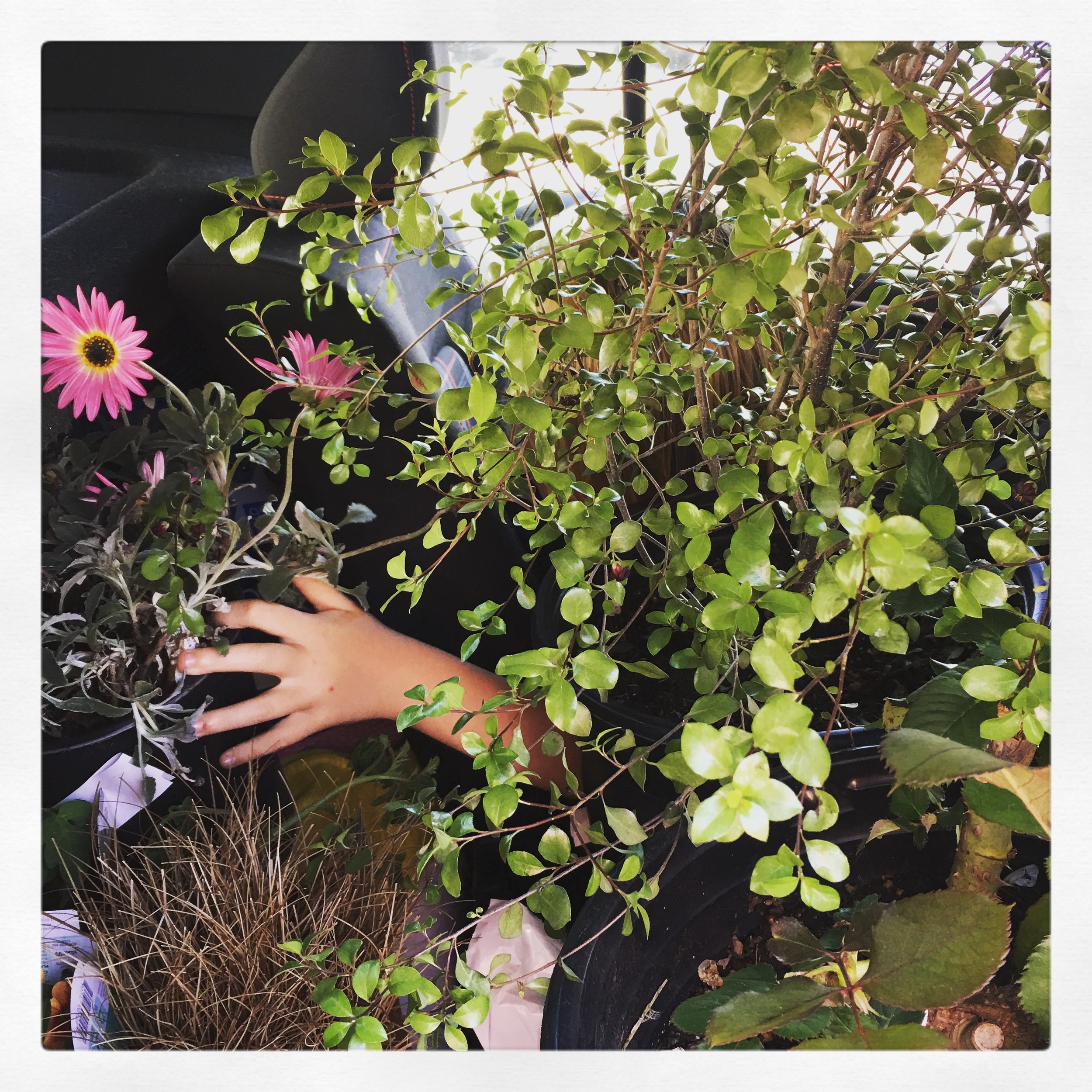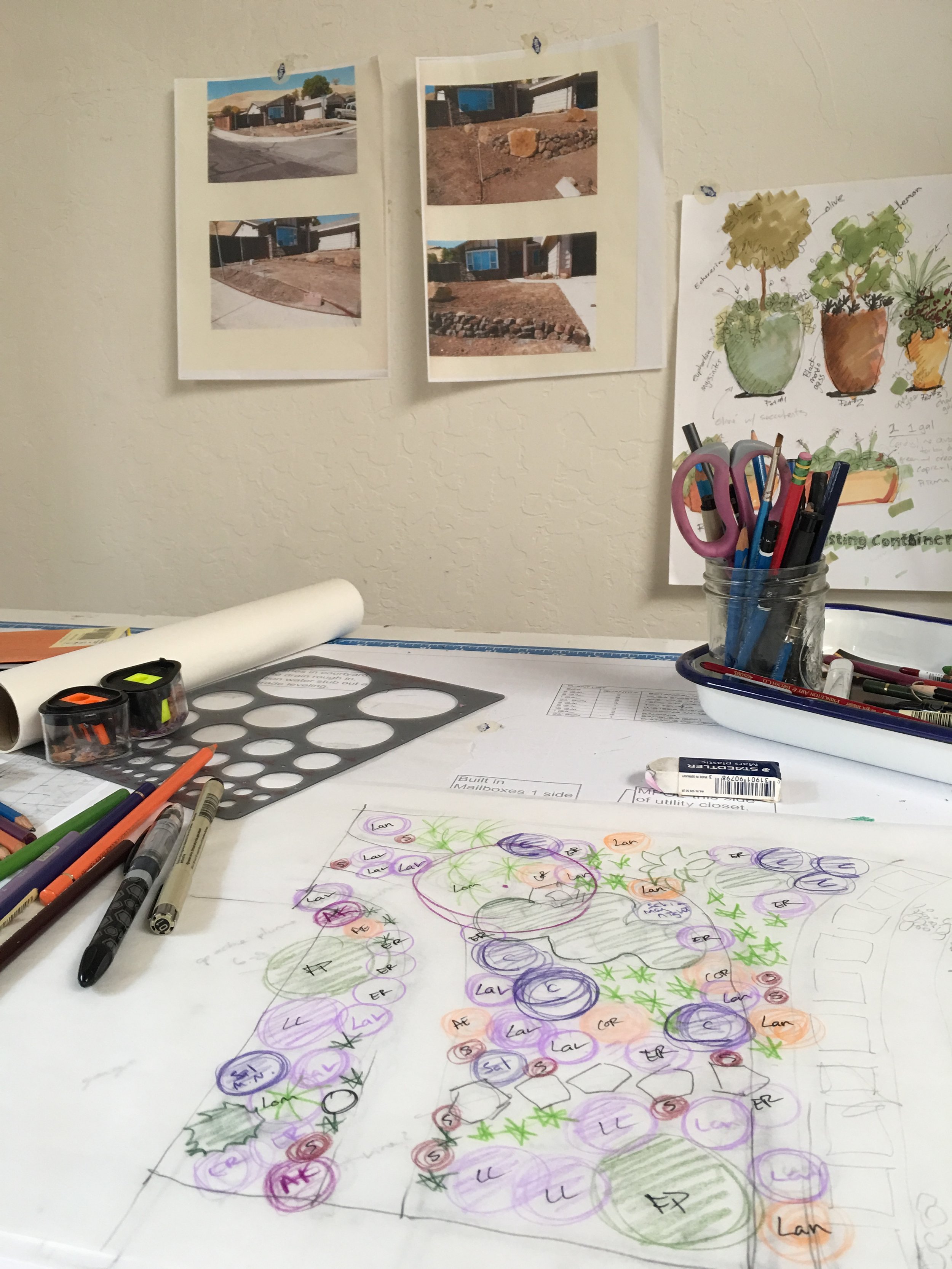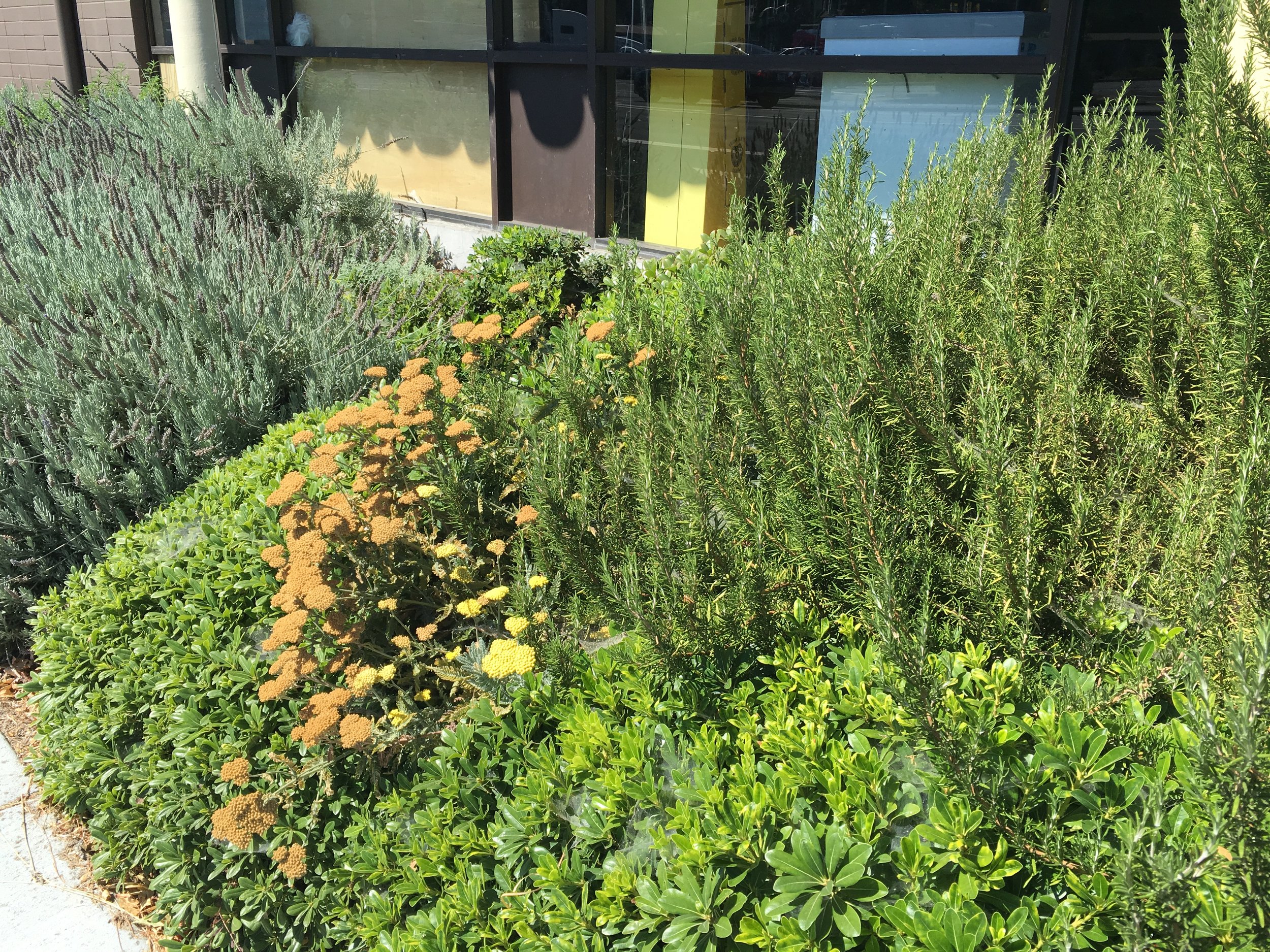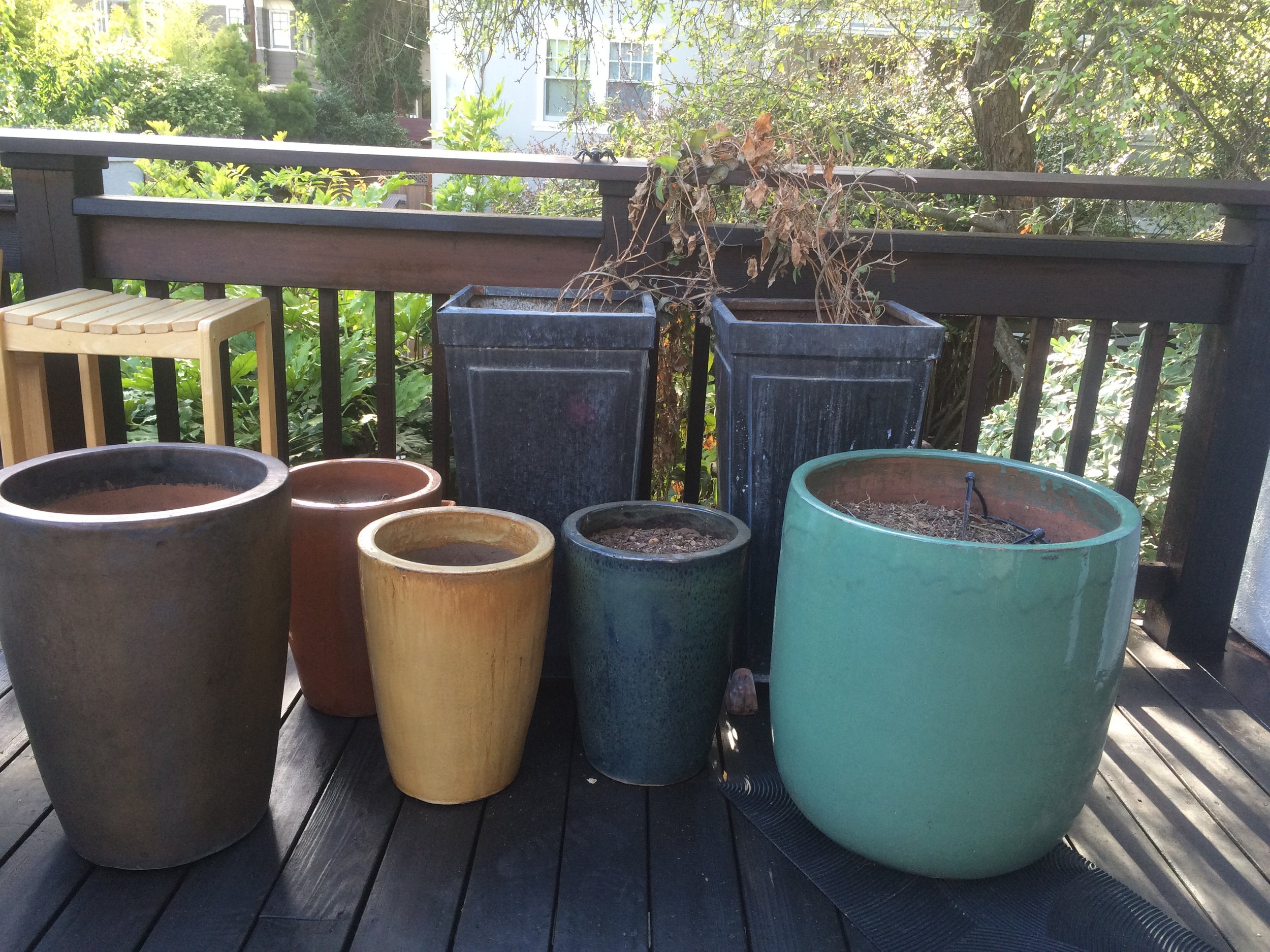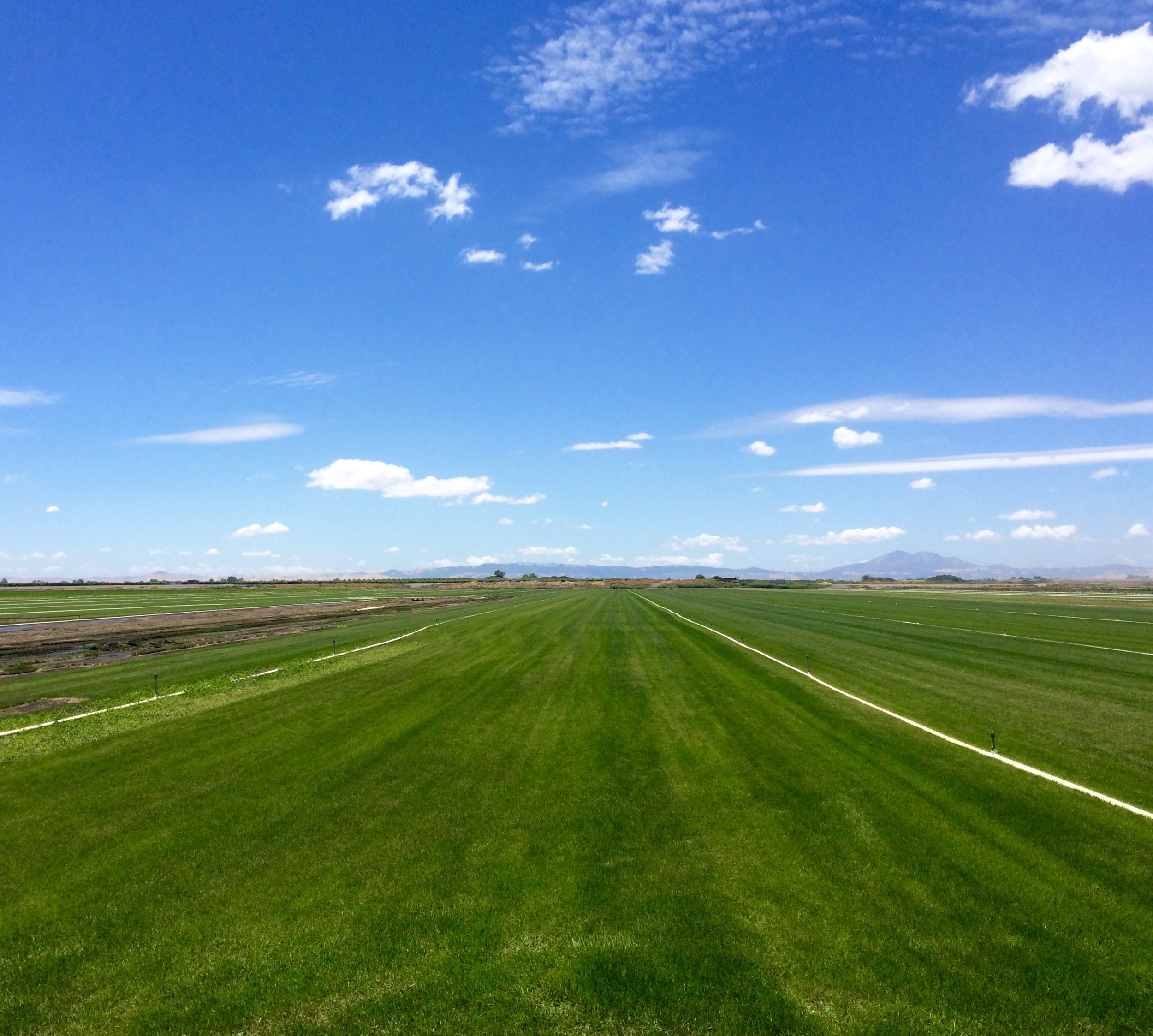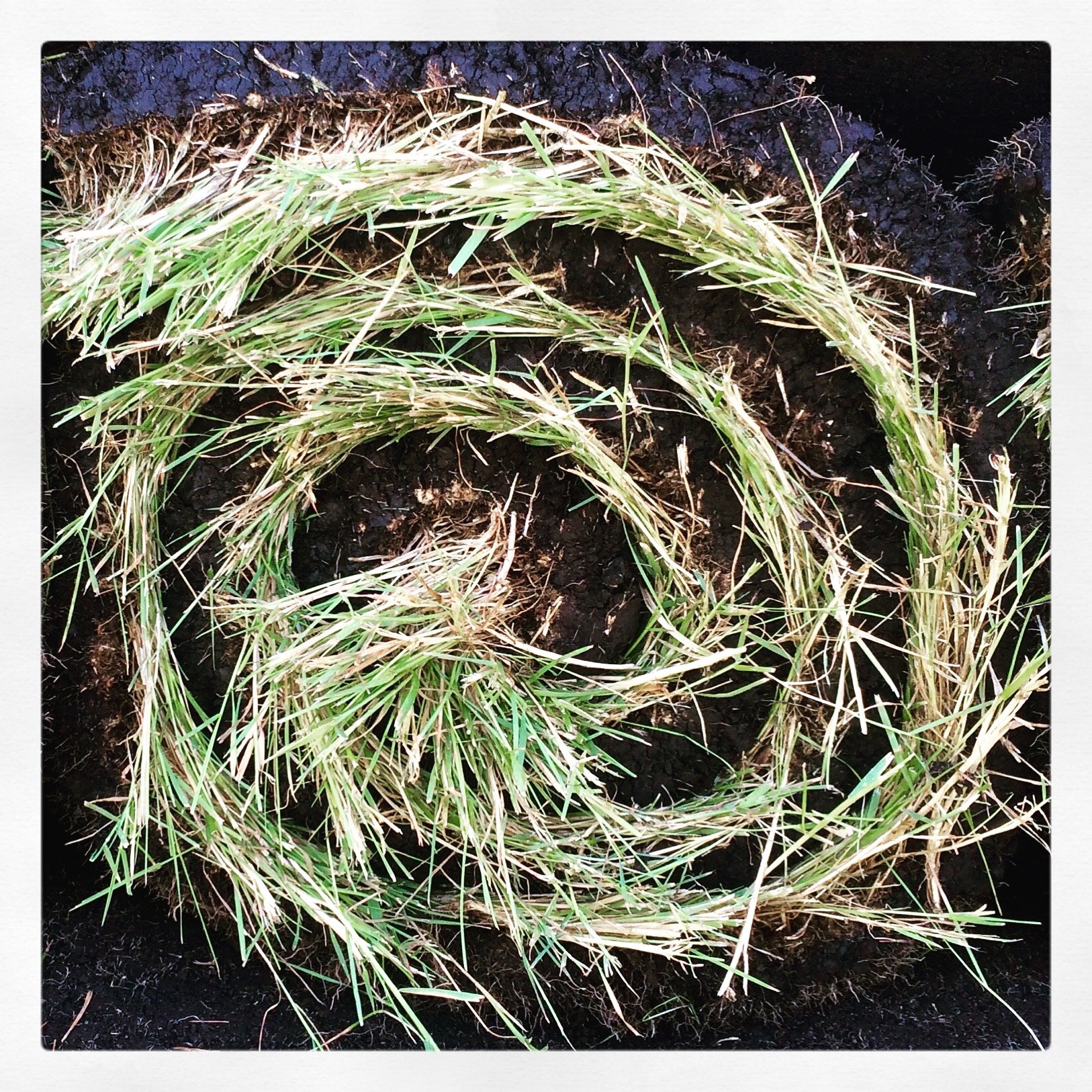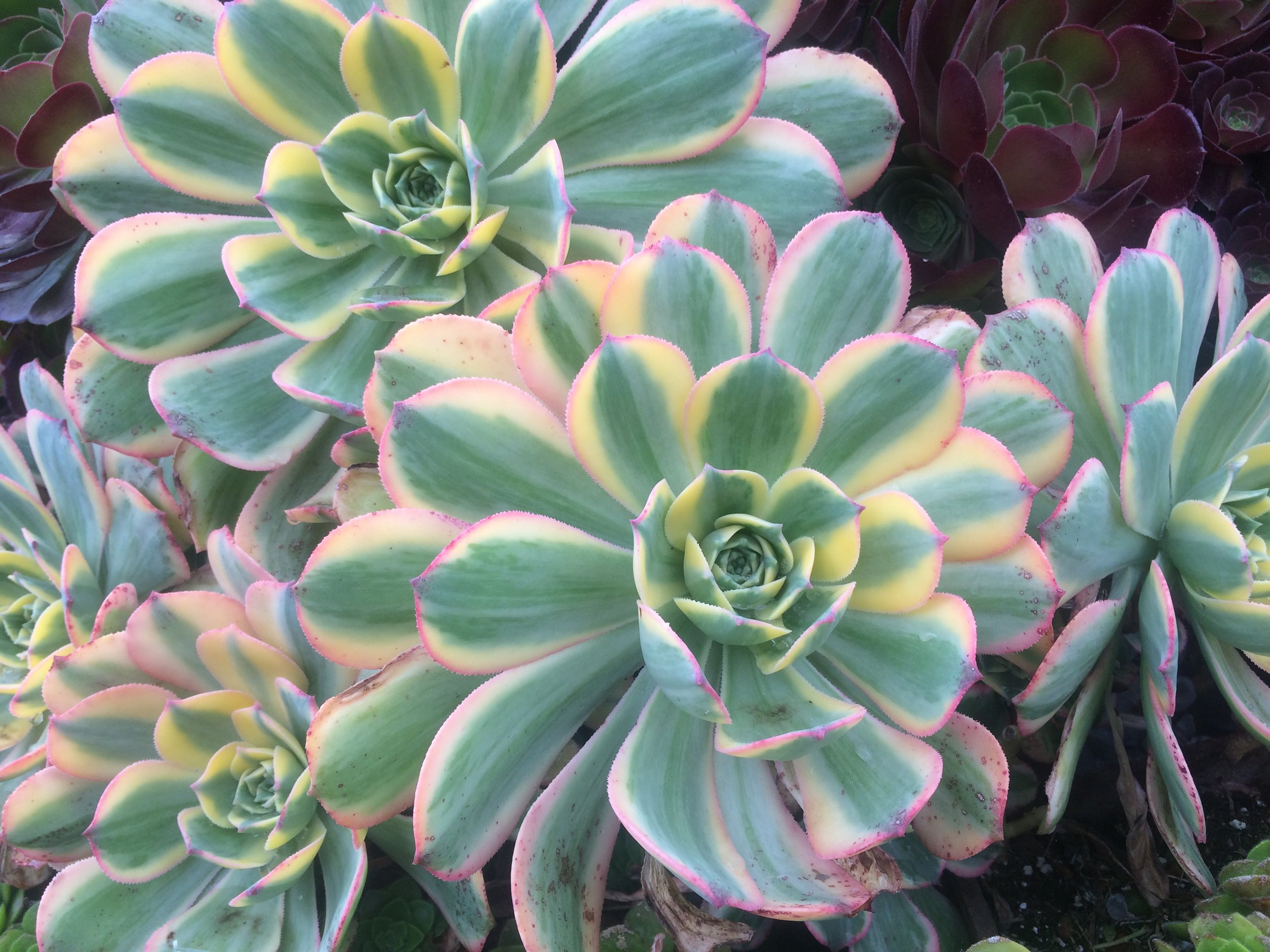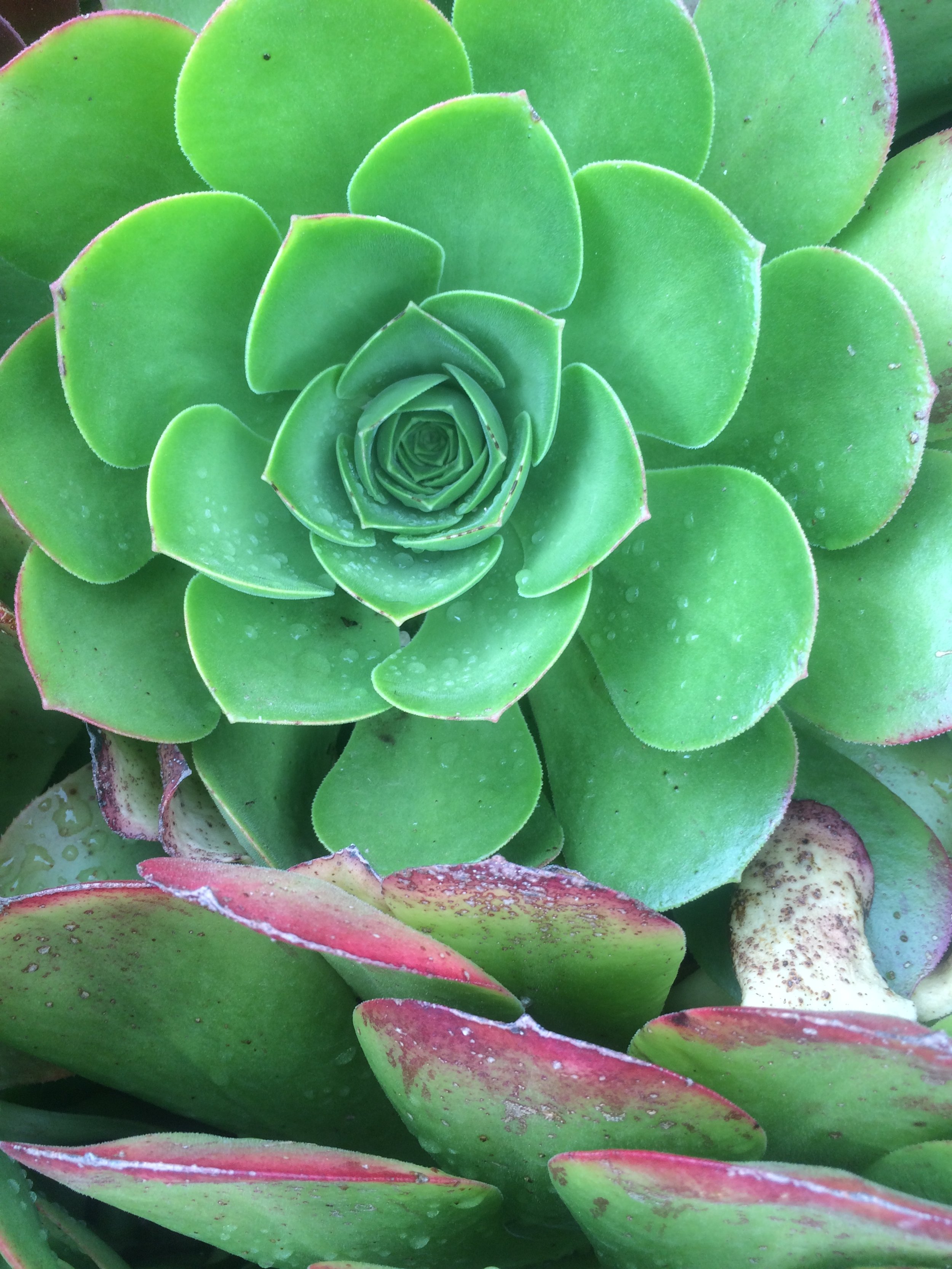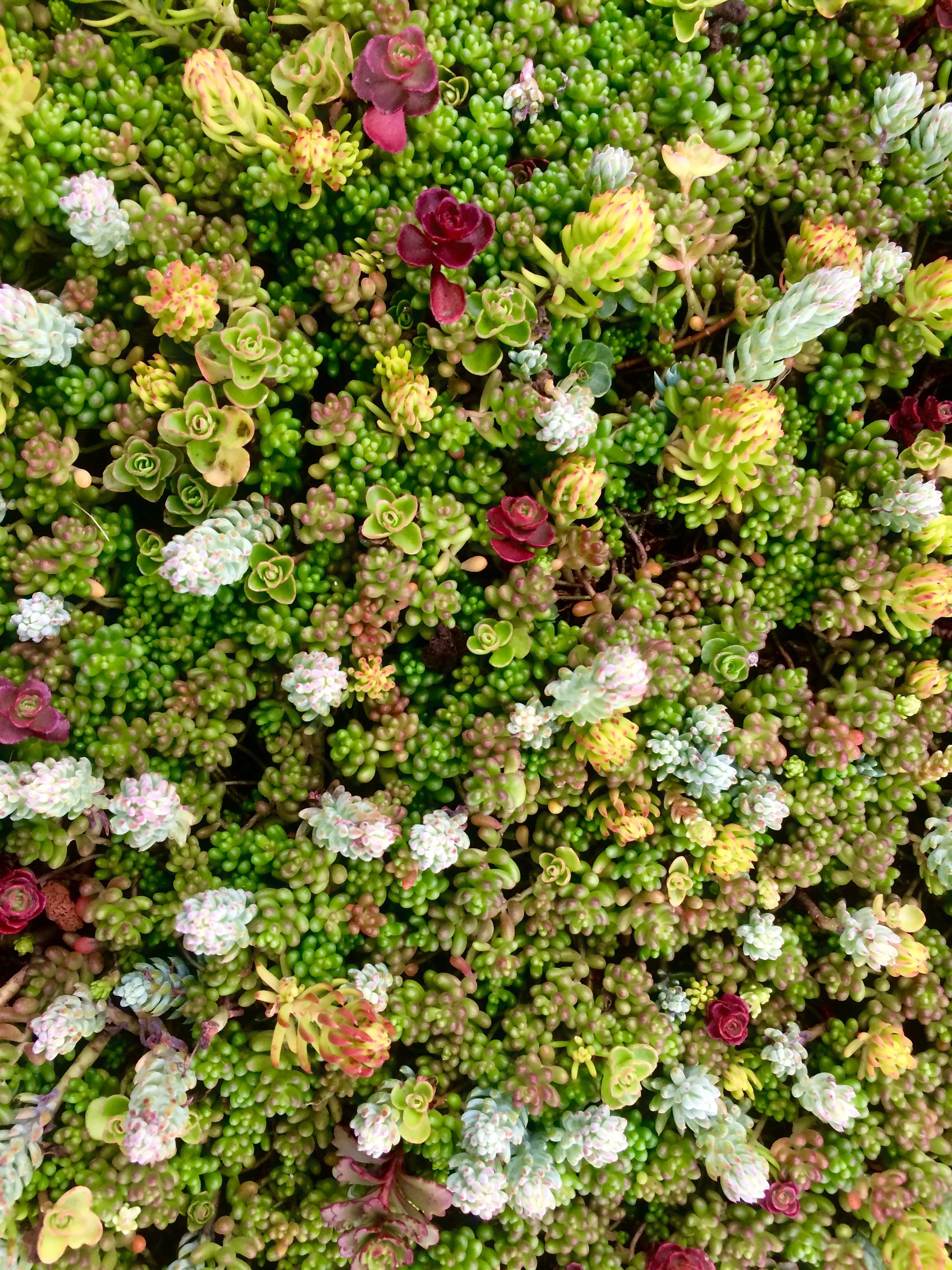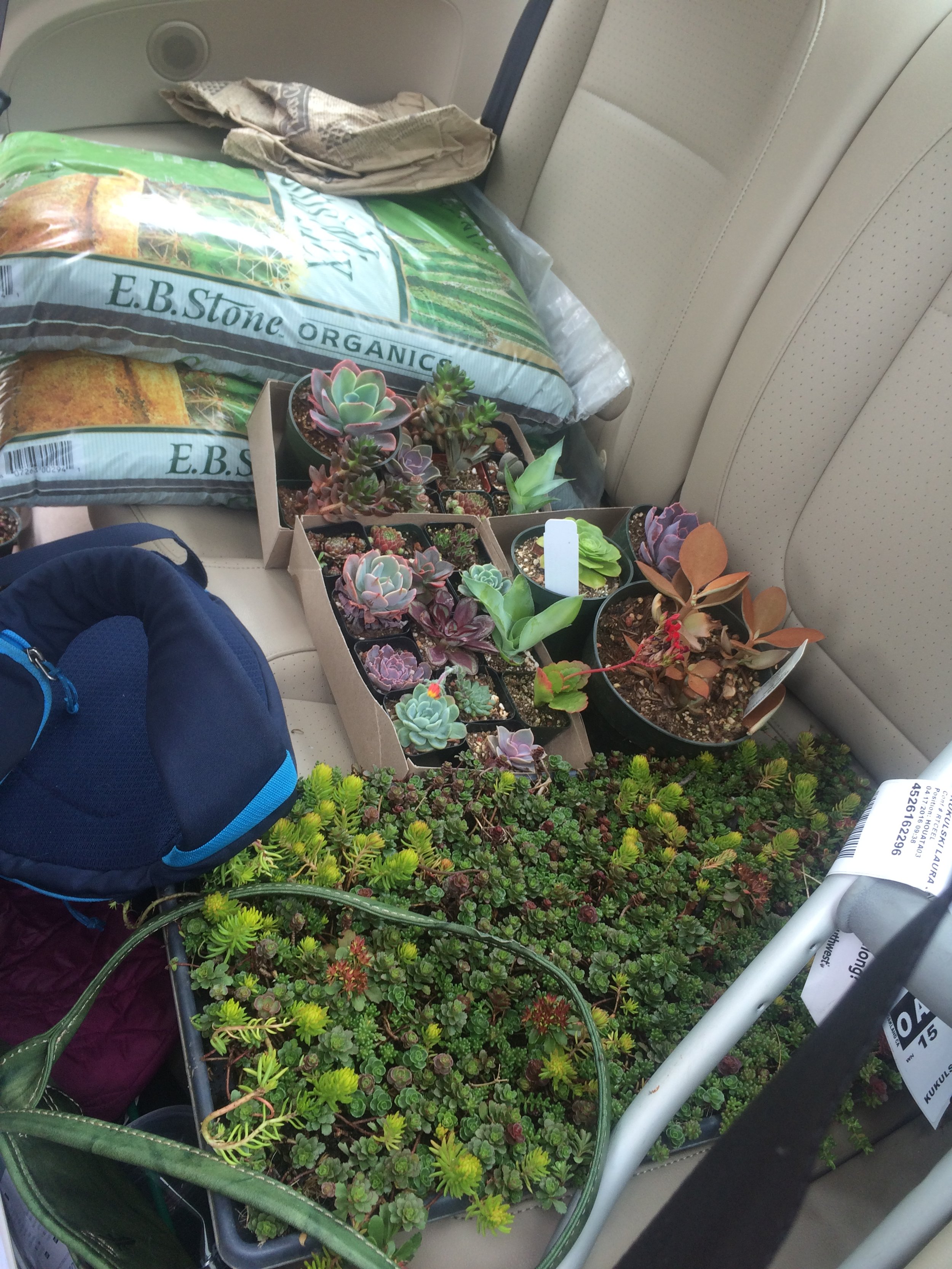Moving a Palm Tree
The project we are working on now is big and fairly complicated. They have an amazing palm tree in the backyard that is in the way of the new pool pavilion we have designed for them. It's a residential lot with some weird angles and an existing pool and other built elements that are making siting the pavilion difficult. Hence, we are moving the palm. It is a huge and mature Brahea armata - Blue Palm, how much does this thing weigh?! A lot.
We called in the local 'Palm and Avocado Tree Guy', Gary Gragg, of Golden Gate Palms Nursery fame. You can visit the nursery in Richmond, California; find more info here: https://www.goldengatepalms.com/
We invited Gary out to take a look and to ask about the possibility of moving the palm. He comes out and says, "No problem, let's move this baby girl!" Or something like that, anyway.
Mature Blue Palm getting transplated
Gary is a bit of a character - outgoing, gregarious, knowledgeable, and very positive. A true and delightful plant geek. We actually had him out to our own house a few weeks ago to consult about avocados. My spouse is obsessed with having avocados. We bought three and they got planted all together in one large hole - 3 plants, one hole. Read what Gary has to say about avocados in the Bay Area here: https://www.goldengatepalms.com/avocados
Back to our Walnut Creek project... Gary and his crew arrive and maneuver their excavator/forklift into the backyard. The receiving hole has already been excavated and the palm is ready to go. After lifting the tree out of the hole, they decide to go get a smaller forklift. I love how insect-like this machine is!
We all leave for some lunch and freaking out. But Gary comes back with the new forklift and they get back to work. I go back to standing around watching and kind of squealing in alarm. At some point, the palm is off-balance and all the guys jumped on the back of the forklift to balance it out. I admire this "get it done" attitude that appears to be fairly reckless about personal safety, but at the same time I do NOT want to see someone get flung ass over teakettle onto the pavement.
They can't grab the tree from the base like I was expecting. Which makes sense, there is no way to keep it stable from that position. The thing is dang heavy. Instead, they grab it around the middle and slowly drive around the pool to its final resting place.
The pool toys gently drifting about is making me crack up for some reason. So serene!
HOPEFULLY, it will bounce back from this fairly traumatic move! Palms, as you can see from some of these photos, have a fibrous root ball rather than a tap root. They don’t mind being moved but it’s still a trauma and you never know! They need to keep the root ball HELLa moist for a while, while the palm acclimates.
More APLD Tour Goodness
We did a whirlwind tour of some gardens and nurseries with Nigel Dunnett when he was here giving a present ration the Bay Area APLD district.
I would love to try this naturalistic planting design that he and Piet Oldof and such talk about but I’m not sure our clientele is the best for this technique. So, Client context matters and ongoing maintenance matters.
Our work primarily involves small to medium residential gardens NOT large scale public installations we are seeing in photos. It’s not as though our clients have dedicated gardening staff.
Who will maintain these gardens post-installation? The homeowner? A standard mow-and-blow service? I’m just not sure the more loosy-goosey evolution of a garden like this will work for say, a busy family of four.
And like, detailed written-out progression plans? idk. But my sense is that any POE visit after installing one of these at some normal Lafayette homeowner is just going to show a field of weeds and oxalis. Is this cynical of me? I’m thinking particularly of a client sending me photo of her garden a year or two after it was installed and it was all just Centranthus ruber °՞(ᗒᗣᗕ)՞°. I mean.. Centrathus is a pretty pink flower and all but NO. /rant
Back to the garden tour! This was a very fun and wild garden that you can see evolved over time and at the whims of the homeowner and designer. There were so many fun paving details like this and surprise seating moments
This is a John Greenlee project and he joined us for the tour. So it was great to have him there to talk about the gardens evolution.
A nice picture of Nigel Dunnett and John Greenlee
I love an old shed with tools moment.
the planting textures really stood out to me.
There were many ‘view moments’ where you turn a corner and suddenly you have a cool view or an interesting garden sculpture or water feature to look at. At one point I was so pleased to see one of the glassword color-changing roses made by The Sun Brother’s Studio folks! I swear I took a picture but now I can’t find it.
Iresine herbstii 'Aueoreticulata'
Iresine herbstii 'Aueoreticulata'
This is also called Beefsteak Plant. This particular plant is hanging out outside my hair stylist building. Normally this isn’t a plant that we see planted outside in our Mediterranean climate. But it’s doing quite well in this protected area with reflected heat in a container.
I love how vibrant the variegated leaf and bright pink stems are.
Garden Tour - Keelya Meadows
I absolutely love the book Fearless Color Gardens by Keelya Meadows. I knew she was a local designer because she has a little exhibit at American Soil and Stone and I knew her home garden was open sometimes but I was not sure of the details. I joined the Garden Conservancy this year and lo! her garden was on the Open Days list! I made T. come with me.
I love all the quirky paving, concrete forms, and amazingly fun use of color. I wish my own garden was just like this. It was a bit over the top for T. though and I suspect he will object.
I’m desperately in love with that leopard-spotted Ligularia and must acquire one for myself immediately.
Some plants and a visit to American Soil and Stone
I like the textures in the photo I took at American Soil and Stone. So stripes, much vertical! I find visiting stone yards to be very satisfying. Magpie-like I usually want everything there.
Two plants I am enjoying in my own yard right now. This yellow lotus plant and my Spraxis bulbs! Aren’t hey pretty?!
What else has been happening? We have been doing a few small plant installs at work.
Oh and I kind of love this picture of J*** buried under plants in the car. LOL.
Right Tree, Right Place
This is a handy tree guide made up for PGE by California Polytechnic State University for the Bay Area, Northern and Central California. If you're working on a site with power line issues this tool can be quite useful.This page has some handy guides for selecting the right tree for the right place based on some other guidelines like allergy and toxicity or fire safety.
You can order a Right Tree, Right Place poster from PGE here and download a cute poster for Palm trees appropriate for use near power lines.
The people who planted redwoods right next to the power lines at a recent client's property could have used this guide 15 years ago...
Getting settled in my new office
Settling in to my new office in Emeryville. The construction at my house is… very disruptive. I was working upstairs the other day and they LIFTED and DROPPED the entire house. LOL. I was def. startled. I’ll be excited to have a basement, for sure.
Pretty Little Grass - Melinis nerviglumis
This is such a pretty grass! I have one that I got from Annies Annuals. Devil Mountain has it listed as Rhynchelytrum nerviglumis but I have only seen it as Melinus nerviglumis. It’s not exactly low water but I really love the soft pink plumes.
From San Marcos Growers site:
Melinis nerviglumis (Ruby Grass) - A small semi-evergreen cool-season grass from S. Africa that forms a tidy 1 foot tall clump. It has blue-green foliage that turns purplish-red in the fall and showy pink flowers that rise a foot above the foliage in the spring and summer with spent flowers still attractive into winter. Best in full sun with regular water in a well-drained soil but tolerates considerable periods without irrigation and near seaside conditions. Is hardy to around 20° F and perennial in gardens in USDA Zones 8 and above but useful as an annual in colder climates. Cut back in fall to midwinter to allow fresh new foliage to emerge in early spring. A very attractive grass massed or scattered in a border planting or as a container specimen. This grass is called "one of the showiest of the small flowering grasses" by John Greenlee in his "Encyclopedia of Flowering Grasses". Ruby Grass is native to large areas of Africa south of the Sahara and also in Madagascar. There are several interpretations for the entomology of the genus name. One thought is that it is derived from the Greek 'melas' meaning "black" for its black seeds but another thought is that it is from the Latin 'mel' meaning honey for the sweet aroma some species have. The specific epithet is in reference to the veins on the glume (flower bracts). We have grown this plant since 1997 and early on used its older name Rhynchelytrum neriglume. This same plant is marketed under the names 'Pink Crystals' and 'Savannah' and besides Ruby Grass is commonly called Bristle-leaved Red Top. It should not be confused with the related Melinis repens that has naturalized in disturbed sites along the California coast.
Pleasant Hill, CA Rasputin Music Green Roof and Landscaping
I'm just starting to drive around the far East Bay (i.e. Walnut Creek, Pleasant Hill, etc). I drove buy this Rasputin Records Shop the other day and was kind of surprised to see the nice landscaping and green roof! I stopped to snap a few pics and I probably should have run in to ask who did their landscaping. Next time!
Anywho, how cute is this?! Do I see some invasive grasses? Yes. I am trying to ignore them though. :)
APLD Plant Fair
Sadly, I didn't manage to take enough photos during the APLD Bay Area District Plant Fair. Next time, I must remember to capture some overview and crowd shots!
The APLD Bay Area Plant Fair is a fantastic event where growers and nurseries come together to showcase their latest and most popular plants. It's a great opportunity for landscape designers and plant enthusiasts to learn about new varieties and get expert advice on plant care and cultivation. I always enjoy attending and hearing the detailed stories and tips from the growers. It’s a fun and informative event that highlights the best of what our local nurseries have to offer.
I won this in the raffle. Now I need to figure out what to do with it!
I would also like to send a shout out to the amazing APLD Bay Area Board Members and Volunteers who pout this event on. Thank you so much for all your work!
Pots on a Deck
This area is quite hilly, and many homes feature decks with stunning views. In some cases, the backyard slopes so steeply that a deck is the only way to fully enjoy the outdoor space. Beautifully designed plant containers can enhance the deck experience, surrounding you with nature and making it even more enjoyable.
I love designing pot vignettes. Selecting pots with harmonious colors and appropriate sizes is crucial. Tiny pots on a large deck or oversized pots on a small deck can frustrate clients and detract from the overall deck experience.
Container shopping can be quite enjoyable, whether you're doing it alone or with clients. It's essential to invest in high-quality containers. From my observations of various client landscapes, I've noticed many small, cheap, and abandoned containers cluttering their side yards. I really don’t love the fiberglass containers I keep seeing. Pottery store inventory can change frequently, so it's important to shop and purchase your pots in a timely manner.
I love the other garden ornaments you can find. Concrete cats, pigs, chickens, etc.
Plants ready to get installed into new homes!
A selection of pots about to get planted up. In the background there you can see two crappy older fiberglass (or plastic even) pots that have simply failed at the seams. They will get hauled off and dumped. We replaced them with nicer ceramic containers in the same basic shape. I love this color palette.
People can get serious sticker shock when it comes to buying contains. Jaws hit the floor, etc. I like to emphasize that they will lat a lifetime and beyond.
A visit to Delta Bluegrass
If you are looking for quality sod in the Bay Area Delta Bluegrass is the place to go.
In the droughty Bay Area, we're encouraging people to remove their lawns. While there is a time and place for some lawn in a residential setting, it's often overemphasized. A common misconception is that families with kids need a huge lawn for play. In my opinion, this is a myth. Lawns are large, monotonous spaces that can limit play opportunities for children. A sprawling lawn might be useful if a child is passionate about soccer or another ball sport, but otherwise, it doesn't offer much in terms of stimulating play and I’m just not into it at all!
That said, a small patch of lawn can be nice, I admit! However, if you simply want a cool, grassy spot to relax with a glass of wine, a meadow is a far better option. Picture an Adirondack chair under dappled shade, with your bare feet in a soft, lush meadow—that's my idea of heaven. OR, picture a couple o tree stumps set up to be a table and chairs and your small children gathered around adding items like pine cones or flowers or rocks to the “table”. Anyway, meadows not only provide a more diverse and interesting landscape with ‘scope for the imagination’ - to quote Anne of Green Gables, but they also support local biodiversity and require less maintenance than traditional lawns.
But, again, there is a place for lawns even in the Bay Area. And there are low water and native options and that is why I am at Delta Bluegrass to hear about them all.
Rolls of Sod at teh Delta Bluegrass growing grounds.
Kurapia! Kurapia is a ground cover plant developed (I think developed in Japan?) from Lippia nodiflora. Kurapia is a low-maintenance, drought-tolerant ground cover that is being used as an alternative to traditional lawns. It requires less water, fertilizer, and mowing compared to typical grass lawns, making it an environmentally friendly option. Kurapia also has strong resistance to pests and diseases and can handle a wide range of soil types, making it versatile for various landscaping needs. Its ability to establish quickly and provide a dense, green coverage makes it an appealing choice for residential and commercial landscapes. It fills in quickly and WILL overrun sidewalks/hardscapes. It works well in shade as well as sun. In the sun this is not great if you have lids and pets running about because it will be absolutely COVERED in bees. In shade it does not flower much.
They have a handy dandy installation exhibit of various sods
The sod cutting and rolling machines were badass. I love weird industrial equipment. They also fed us lunch!
Neighborhood sketchbook
Snapped a picture of a Tibouchina urvilleana on a neighborhood walk and then decided to sketch it. I love the look of the dark river rock and the fallen purple petals.
Sibling Road Trip and all the Succulents!
It’s road trip time with my sister! You can find her here: Bookmaniac. She’s incredibly smart, funny, insightful, and all the things I love. Simply the best!
Anyway, we’re embarking on a road trip south towards Santa Cruz filled with infinite silliness, and our last stop is to pose by the giant artichoke, stay tuned. It’s May in California so it is grey and FOGGY. We have many layers with us.
Succulent Gardens
2133 Elkhorn Road, Castroville, CA 95012
I mostly took pictures of succulents on this trip because we stopped at Succulent Gardens in Castroville, CA, to marvel at their amazing collection. This huge nursery, hidden along a winding road near Moss Landing and all the otters in CA, specializes in a wide variety of succulents and has some fun and creatively designed display gardens and greenhouses. I don't know why but seeing rows and rows of tiny succulents all alike is so visually pleasing! While there, I also signed up for a workshop to create a succulent frame planter, though I somehow forgot to take a picture of it.
Succulent close-ups.
More succulents….
I did buy some stuff…
As promised, here were are looking a bit disheveled in front of a large artichoke.




















